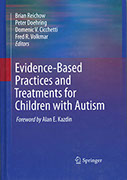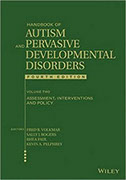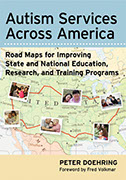Expansion vs. Innovation?
![]() Innovation & transformation involves much more than expansion & improvement
Innovation & transformation involves much more than expansion & improvement
What research guides growth?
 Not all research translates into implementation & impact when helping programs to grow.
Not all research translates into implementation & impact when helping programs to grow.
Where are the leaders?
 Know what you need in a leader, and match them care-fully to your program's goals.
Know what you need in a leader, and match them care-fully to your program's goals.
Are you ready to grow?
 Can you incorporate the new approaches, stark feedback, and partnerships needed?
Can you incorporate the new approaches, stark feedback, and partnerships needed?
Countdown to startup
![]() A timeline for the leadership, resources, and preparation needed to launch
A timeline for the leadership, resources, and preparation needed to launch
Coming Soon
Failure to Launch: Starting new programs of ASD services and training
Incremental growth and transformation in a hospital-based ASD clinic
July 28, 2017
![]() Children's hospitals across the country have sought to develop more specialized ASD services in response to the increased need. More ambitious expansion and improvement has drawn heavily on fundraising and philanthropy. The example outlined offered below draws directly on my experiences helping to lead specialized ASD programs in hospitals in the USA and Canada, as well as other programs whose development I have closely tracked. But these only begin to illustrate some of the distinctions noted earlier between incremental and transformative growth. Each of the examples outlined below is within the reach of any hospital that designates the right leader, develops the right implementation plan, and allocates the right resources.
Children's hospitals across the country have sought to develop more specialized ASD services in response to the increased need. More ambitious expansion and improvement has drawn heavily on fundraising and philanthropy. The example outlined offered below draws directly on my experiences helping to lead specialized ASD programs in hospitals in the USA and Canada, as well as other programs whose development I have closely tracked. But these only begin to illustrate some of the distinctions noted earlier between incremental and transformative growth. Each of the examples outlined below is within the reach of any hospital that designates the right leader, develops the right implementation plan, and allocates the right resources.
A starting point: A multidisciplinary ASD Clinic for Diagnosis and Treatment
For each of the examples listed below, I have assumed that our hospital is building on a base of services already provided by a multidisciplinary ASD team. This clinic might be very small (e.g., a one day per week commitment for professionals from three different professions) or it might be very large (e.g., one or more full-time teams focused primarily on ASD). The clinic might offer services that are very limited (e.g., diagnostic assessment for young children with periodic follow-up) or more comprehensive in their scope (e.g., a range of assessment services, and that includes specific, ongoing treatment or case coordination).
While it is certainly possible to develop some of the services described in greater detail below from scratch, building from the base described above offers many important advantages.
- All of the examples listed below depend on a steady stream of referrals that will likely increase in size; a diagnostic clinic ensures that the referral base has been established.
- Many of the examples listed below draw on multiple disciplines: a pre-existing, multidisciplinary team ensures that relationships between at least some of the contributing professional departments are already in place.
- A scope that extends beyond a one-time diagnostic assessment helps team members to anticipate the complexity of providing care to this population, and tailor the specific initiative to a need with which they are already familiar.
And there is a more important reason: I also believe that every children's hospital should already have a multidisciplinary ASD diagnostic clinic that offers some kind of follow-up. This draws on an important lesson: how multidisciplinary teams magnify the reach & impact of individual disciplines by drawing on the strengths and role of each. In my 2013 book, I described such a service as one of the starting points for building a coordinated network. In settings with active ASD research, this should also include some coordination or integration of clinical and research assessment activities as appropriate.
There is simply no excuse for the failure to have developed such a service, given the increasing awareness of ASD, the number of children presenting with concerns related to their ASD, and the unique and specialized role of children's hospitals in the care of complex cases. Such a failure may signal a hospital without the resources or the culture to change, and should serve as a warning that the initiatives listed below are probably beyond their reach, at least for now. Funders might think twice about a hospital that pitches their new diagnostic clinic as an exciting advance: while that might have been progressive 10 or 15 years ago, today it is just long overdue, Any hospital that argues otherwise has simply failed to do their research!
Incremental Growth
Each example of the incremental growth of our hospital-based services requires that a plan be developed, a leader be identified, and resources be allocated. And the specific type of plan, leader, and resources will differ depending on the type of the initiative undertaken. More ambitious planning might involve undertaking different types of improvement, expansion, or replication as inter-related but distinct steps in a phased rollout.
Improvement and Expansion
Some of the initiatives aimed at improvement and expansion could be bundled into a singe specialized program
- An ASD clinic might expand the range of professionals involved in providing care. This could include the addition of an occupational therapist, social worker, or case manager.
- An ASD clinic might add new staff or re-allocate responsibilities among existing staff to increase overall capacity. For example, additional training can help Pediatric Primary Care Nurse Practitioners to play a more active role in the diagnosis of ASD in certain types of cases (Ott, Levy, & Doehring, 2011), and free up other diagnosticians
- An ASD clinic might expand the range of children seen, to include children of all ages and/or with any co-occurring conditions. This takes advantage of an important lesson in planning growth: ensure a sustainable pipeline of patients by carefully matching programs to the unmet needs identified in the region
Other initiatives aimed at improvement and expansion could involve improved coordination between a designated ASD clinic and other services in or affiliated with the hospital.
- An ASD clinic might coordinate care with other specialized clinics in the hospital likely to encounter children with ASD. For individual cases who require ongoing care (like those involved in behavioral health, neurology, psychiatry, and feeding disorders, for example), this may involve taking the lead in the active coordination of treatment. This draws on an important lesson: anticipate the resources needed to ensure coordinated care. For other clinics likely to have brief contact with specific cases (like the emergency room, day surgery, and dental clinic, for example), the ASD clinic can provide training and consultation about necessary accommodations to policies and facilities.
- An ASD clinic might facilitate care with medical practitioners in the community. This could involve facilitating referrals from and feedback to community-based pediatricians. One example is a specific program to support ASD screening by community-based practitioners, and to ensure prompt evaluation and follow-up for cases determined to be at high risk for ASD. Planning for this should draw on another important lesson: collaborative networks multiply the impact of new initiatives when they carefully draw on the strengths of each partner.
- An ASD clinic might facilitate outreach to and coordination with other community-based providers, like schools or behavioral health. This could be as simple as educating providers about the services offered by the clinic. This could also include consultation contracts or active coordination of care for individual children followed by both.
- An ASD clinic might create new internships or training rotations for pediatricians, nurses, psychologists, speech pathologists, or occupational therapists. Given the specialized nature of this work, such internships are best suited for those in the final stages of their training. For a clinic that is smaller or more limited in the scope of services offered, the training program may simply add another rotation. A clinic that is larger or that includes a broader range of treatment and follow-up may be able to support one or more full-time trainees. Hospitals with an affiliated LEND program may add specific activities to their clinic for LEND trainees.
Replication
There are few established models for delivering hospital-based assessment services to children with ASD that could be replicated in their entirety.
- One exception for ASD clinics affiliated with a program of research is the option to join the Autism Treatment Network or ATN. ATN sites agree to administer a specific assessment protocol associated with a designated treatment priority (like sleep or constipation), for patients who consent to participate in research. In return, affiliated researchers participate in the development of evidence-based practice guidelines (like those for feeding or toilet training) or outcome research studies associated with these treatment priorities.
- Hospitals affiliated with a LEND program might consider replicating the range of programs I introduced as ASD Training Director at the Children's Hospital of Philadelphia.
Transformative Growth
Innovation
As described elsewhere, innovation often involves a unique combination of elements that individually have been implemented elsewhere: treatment methods, treatment targets, populations, infrastructure, and so on. Several such combinations might be envisioned for our ASD clinic.
A coordinated feeding disorders clinic
For children with ASD and feeding disorders, a new program may draw together expertise from different clinics to create a new assessment and treatment team within the ASD clinic that coordinates with community-based providers. It may begin, for example, with a partnership between a pediatrician and a psychologist or behavior analyst experienced in the use of behavioral techniques for feeding programs targeting children with ASD and related conditions.
This team can be improved with the addition of other disciplines experienced in feeding programs for those with developmental disabilities, like a speech pathologist and occupational therapist experienced with dysphagia. The team may consult closely with other specialists providing relevant assessments (like a team conducting barium swallows, or a nutrition evaluation). With the help of a designated case manager, the specialized ASD feeding clinic may coordinate with community-based programs helping to implement treatment in other settings (like in the home and school) (McGowan & Doehring, 2016). While there are a number of hospital-based feeding teams specialized in children with ASD, only a small proportion of these truly integrate multiple approaches, and I know of no team that does so in close coordination with community-based providers.
A tiered system for ASD screening and diagnosis.
A tiered system for ASD screening and diagnosis could include training and support to community-based providers and Pediatric Primary Care Nurse Practitioners (PNPs) to diagnose ASD in less complex cases, as described elsewhere. This is coupled with a system for triage and referral of more complex cases directly to a more experienced team within the ASD clinic.
In a second phase, a program might train a broader range of community-providers in ASD screening, and the appropriate referral to hospital and community-based teams for diagnosis. While programs for training pediatricians and others in ASD screening have existed for more than 20 years, many struggle to guarantee a clear and rapid route to accurate diagnosis. Part of this problem lies in the reluctance to use anything less than a gold-standard diagnostic protocol even in less complex cases, which limits the capacity of highly specialized diagnostic teams. And the potential contribution of PNPs to such cases has rarely been tapped. This kind of initiative might draw on another important lesson: create tiered professional development programs that tailor content to the role and expertise of each staff and agency.
Transformation
As described elsewhere, transformation requires the introduction of a method that fundamentally changes other kinds of services and training already provided by the organization. While it is difficult to imagine growth in ASD services that would transform a hospital, it is certainly possible to imagine growth that would transform the ASD clinic, and perhaps offer an example for other services in the hospital.
Coordination with community providers for children in behavioral crisis
An ASD clinic might pilot a system to facilitate treatment coordination with community providers for specific, high-risk cases: for example, children with a history of behavioral crises that can be traced to complicating and co-occurring medical conditions. This take advantage of an important lesson in connecting research to practice: the power of evidence-based practices using positive behavior approaches informed by functional assessment (Reichow, Doehring, Cicchetti, and Volkmar 2011). This system requires ongoing coordination of treatment, shared professional development, a delineation of the relative responsibilities of each party, and a sustainable funding model. For example, a hospital and a network of community behavioral health providers might adopt protocols for coordinating care, sharing data, and establishing treatment priorities. This kind of coordination may be all that is needed to prevent behavioral crises that are costly and harmful (Doehring, 2014).
Successful implementation models a new role for the hospital, and over time may transform the kinds of patients seen. For example, the hospital might be able to shift its ASD behavioral unit towards an increased emphasis on more complex cases that facilitates research, creates new post-graduate internship opportunities, and ensure a more sustainable revenue stream because of the treatments emphasized.
A coordinated system to integrate feedback from patients and stakeholders
An ASD clinic might model an ongoing system for integrating feedback from patients, families, and other stakeholders (front-line professionals, funders, and so on) in treatment, in a way that shapes the program's growth. This draws on other important lessons about the insights that advocates can offer. The feedback can be used by a stakeholder-driven advisory group that meets periodically to help develop an improvement plan, and then monitor progress towards the goals set. Over time, the group can spawn other ways to engage patients and stakeholders: to help a local advocacy group build a parent-mentor program that complements the support offered by the clinic; to create parallel groups in other key partners to coordinate growth in areas of mutual importance; and to create a forum for funders to explore new projects. This might also model an important lesson about translating research into practice, by conducting surveys to identify critical gaps in access to basic care, and to set benchmarks for new programs.
These and other efforts might be integrated into a broader planning process at the regional or state level. Aligning program transformation with priorities established by a larger coordinating committee can help to unlock collaboration with key partners, and give new impetus to proposed policy changes at the state level. This is especially true for when state coordinating committees are legislatively mandated, and in smaller states in which a single children's hospital is the hub for specialized services.
Incubation
As described elsewhere, incubation is the development of new sites that can implement a program model, and that themselves become largely capable of independently maintaining themselves. In the case of a children's hospital, this can include the development of specialized satellite clinics that are independent of the parent site in their day to day operations, and eventually undertake expansions or improvements of their own. These satellites are best suited for: (a) intensive and specialized treatment that be difficult to maintain with long commutes to the parent site (like a short-term feeding disorders treatment program), and; (b) specialized assessments needed by enough cases to support a second site (like diagnostic assessments). This latter option draws on an important lesson: Creating right-sized satellite sites increases overall capacity and improves access.
Related Content
On this site
Other Examples of Growth
![]() An ASD Teacher Training Program
An ASD Teacher Training Program
![]() A University-Based ASD Transition Program
A University-Based ASD Transition Program
Expansion vs. Innovation?
![]() Innovation & transformation involves much more than expansion & improvement
Innovation & transformation involves much more than expansion & improvement
What research guides growth?
 Not all research translates into implementation & impact when helping programs to grow.
Not all research translates into implementation & impact when helping programs to grow.
Where are the leaders?
 Know what you need in a leader, and match them care-fully to your program's goals.
Know what you need in a leader, and match them care-fully to your program's goals.
Are you ready to grow?
 Can you incorporate the new approaches, stark feedback, and partnerships needed?
Can you incorporate the new approaches, stark feedback, and partnerships needed?
Countdown to startup
![]() A timeline for the leadership, resources, and preparation needed to launch
A timeline for the leadership, resources, and preparation needed to launch
Coming Soon
X
My Presentations and Publications
 (2016) With Joy McGowan, Peter. Protocols for oral feeding programs for children in school settings. Pennsylvania Speech and Hearing Association, Pittsburgh, PA.
(2016) With Joy McGowan, Peter. Protocols for oral feeding programs for children in school settings. Pennsylvania Speech and Hearing Association, Pittsburgh, PA.
 (2011). With Brian Reichow, Dominic Cicchetti, & Fred Volkmar F. (Eds.). Evidence-Based Practices and Treatments for Children with Autism. Springer-Verlaug, New York, NY.
(2011). With Brian Reichow, Dominic Cicchetti, & Fred Volkmar F. (Eds.). Evidence-Based Practices and Treatments for Children with Autism. Springer-Verlaug, New York, NY.
![]() (2010). With Megan Ott and Susan Levy. Early Autism Screening and Identification Clinic (EASI): A Nurse Practitioner & Physician Clinic Model. National Autism Conference. State College PA.
(2010). With Megan Ott and Susan Levy. Early Autism Screening and Identification Clinic (EASI): A Nurse Practitioner & Physician Clinic Model. National Autism Conference. State College PA.
Guideposts
![]() Straight Lines Use large, well-designed surveys to identify critical gaps in access to basic care, and to set benchmarks for new programs
Straight Lines Use large, well-designed surveys to identify critical gaps in access to basic care, and to set benchmarks for new programs
![]() Straight Lines Take advantage of powerful, evidence-based practices using positive behavior approaches informed by functional assessment
Straight Lines Take advantage of powerful, evidence-based practices using positive behavior approaches informed by functional assessment
![]() Simple Steps Launching a complex program in phases helps to maintain focus on specific goals, and to document progress for funders.
Simple Steps Launching a complex program in phases helps to maintain focus on specific goals, and to document progress for funders.
![]() Simple Steps Advocates must help to decide which services should be prioritized for their own child and for the overall program.
Simple Steps Advocates must help to decide which services should be prioritized for their own child and for the overall program.
![]() Simple Steps Multidisciplinary teams magnify the reach & impact of individual disciplines by drawing on the strengths and role of each.
Simple Steps Multidisciplinary teams magnify the reach & impact of individual disciplines by drawing on the strengths and role of each.
![]() Simple Steps Creating right-sized satellite sites increases overall capacity, improves access, and sets the stage for program replication.
Simple Steps Creating right-sized satellite sites increases overall capacity, improves access, and sets the stage for program replication.
![]() Simple Steps Ensure a sustainable pipeline of participants by carefully matching programs to the unmet needs identified in the region
Simple Steps Ensure a sustainable pipeline of participants by carefully matching programs to the unmet needs identified in the region
![]() Simple Steps For programs that depend on the involvement of multiple agencies, anticipate the resources needed to ensure coordinated care
Simple Steps For programs that depend on the involvement of multiple agencies, anticipate the resources needed to ensure coordinated care
![]() Other Lessons Create tiered professional development programs that tailor content to the role and expertise of each staff and agency
Other Lessons Create tiered professional development programs that tailor content to the role and expertise of each staff and agency
![]() Other Lessons Collaborative networks multiply the impact of new initiatives when they carefully draw on the strengths of each partner
Other Lessons Collaborative networks multiply the impact of new initiatives when they carefully draw on the strengths of each partner

